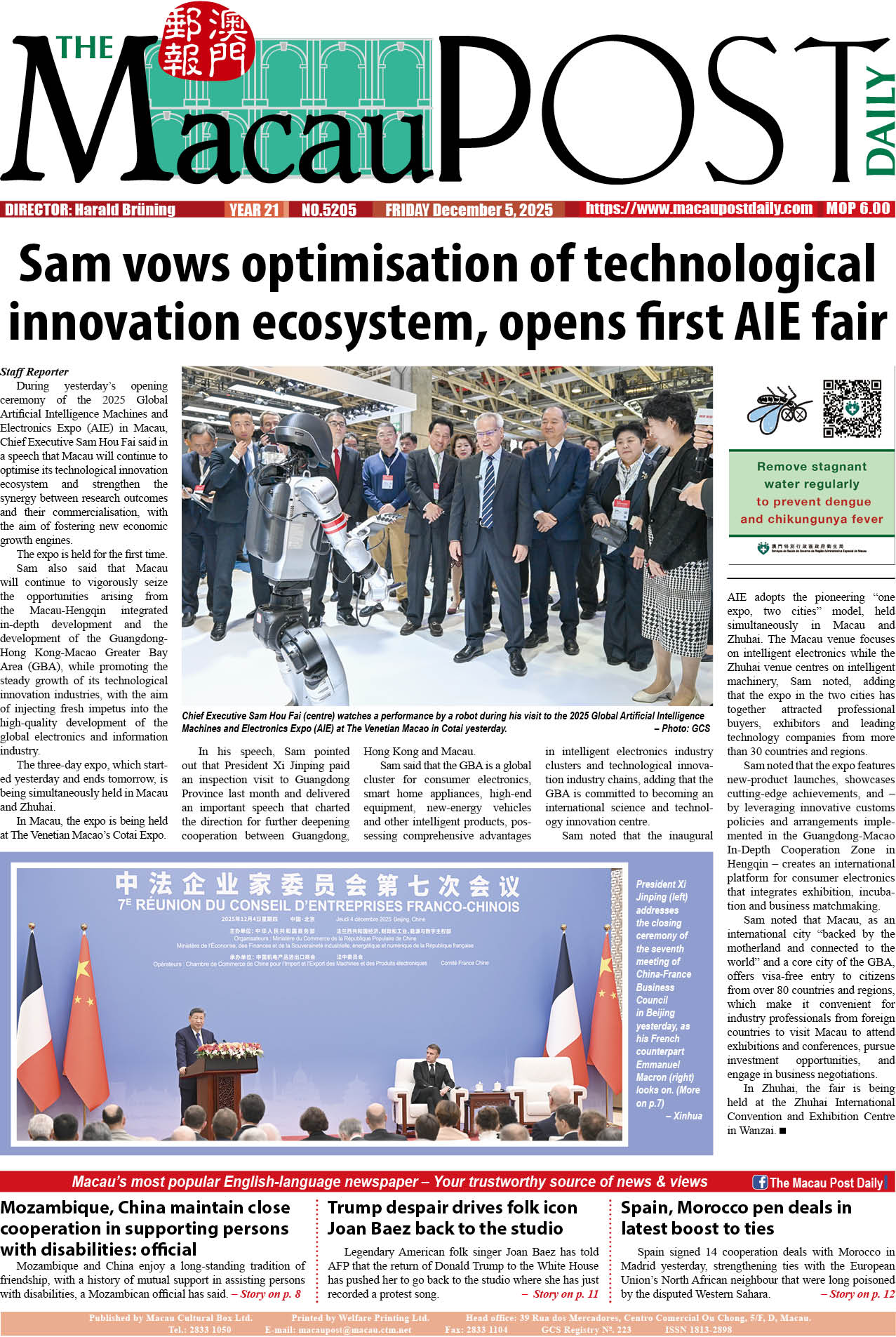Analysis
BEIJING – Despite a sluggish global economy, China has navigated the various economic headwinds with an effective policy mix and put the economy on a solid footing to achieve its full-year growth targets.
Data from the National Bureau of Statistics (NBS) showed Wednesday that retail sales of consumer goods, a major indicator of consumption strength, grew 7.6 percent year on year in October, marking its fastest pace since May and quickening from a rise of 5.5 percent registered in September.
Industrial production also beat market expectations, rising 4.6 percent year on year in October, accelerating from the 4.5 percent growth pace seen in September. This also marked the strongest growth since April.
Employment remained generally stable, with the surveyed urban unemployment rate at 5 percent in October, unchanged from that in September, according to the NBS.
Judging from major economic indicators, NBS spokesperson Liu Aihua said the country’s economy has maintained a sustained momentum of recovery in October, and laid a solid foundation for the country to achieve the full-year growth targets.
The world’s second-largest economy expanded 4.9 percent year on year in the third quarter. China set its GDP growth target at around 5 percent for 2023.
BRIGHT SPOTS, CHALLENGES
Wednesday’s data showed the country’s economic structure continued to improve, which macroeconomist Pan Jiancheng said is vital for sustainable development in the longer term.
Consumption is playing an increasingly important role in driving growth, with consumer spending contributing 83.2 percent to economic growth in the first three quarters, according to the NBS data.
The country’s consumption will continue to recover thanks to the continued growth in disposable incomes and a slightly lower saving rate, a recent Goldman Sachs report said.
High-tech manufacturing maintained robust growth, with the value-added industrial output of the drone manufacturing sector surging 53.2 percent year on year in October, while new energy vehicle production expanded 27.9 percent from one year earlier.
The Chinese economy will continue to recover under effective macro-economic policies, but the recovery will be a wave-like development with twists and turns, Liu said.
“At present, the external pressure remains great, the constraints from insufficient domestic demand are still prominent, enterprises face many difficulties in production and operation, and hidden risks in certain areas require much attention,” the spokesperson told reporters at Wednesday’s press conference.
The weakness remained in China’s real estate sector, with investment in property development continuing to cool in the first 10 months, down 9.3 percent year on year.
Fixed-asset investment went up 2.9 percent year on year in the first 10 months, further softening from the 3.1-percent growth in January-September and 3.2-percent in the first eight months. The growth represented the weakest expansion since the end of 2020.
POLICY MIX
China has been ramping up its efforts to boost economic recovery in recent months, including enhancing support for the private sector, as well as measures to bolster consumption and the real estate sector.
Before Wednesday’s data release, the People’s Bank of China (PBOC), the central bank, boosted liquidity injections, but kept the interest rate unchanged when rolling over the maturing medium-term lending facility.
The PBOC has cut the financial institutions’ reserve requirement ratio (RRR) twice this year, by 0.5 percentage points in total. Wen Bin, chief economist at China Minsheng Bank, expected more reductions in the RRR and benchmark interest rates to be likely in the future.
On the fiscal policy front, the country last month lifted its 2023 budget deficit ratio from 3 percent to around 3.8 percent, through the issuance of an additional 1-trillion-yuan (US$139.3 billion) in government bonds during the last quarter of the year.
The effective implementation of the macro-economic policy mix will provide “a strong guarantee” for the country’s sustained economic recovery, Liu Aihua said.
She said a low comparative basis from the fourth quarter of last year would lead to further improvement in the year-on-year growth of major indicators, and more efforts are needed to ensure a sustained economic recovery.
Pan said more supportive policies are also needed to further lift the confidence of consumers and private business.
– Xinhua







